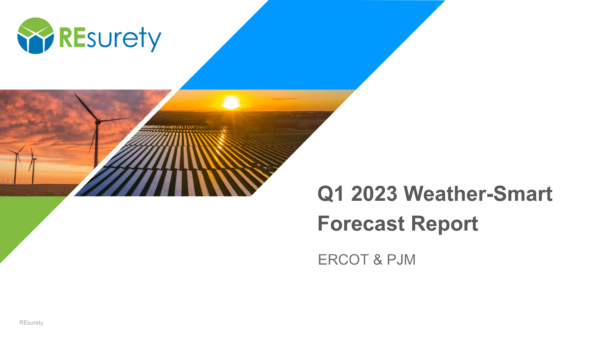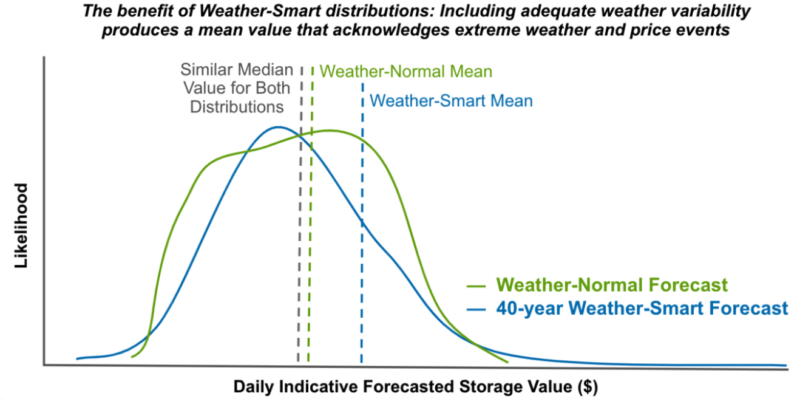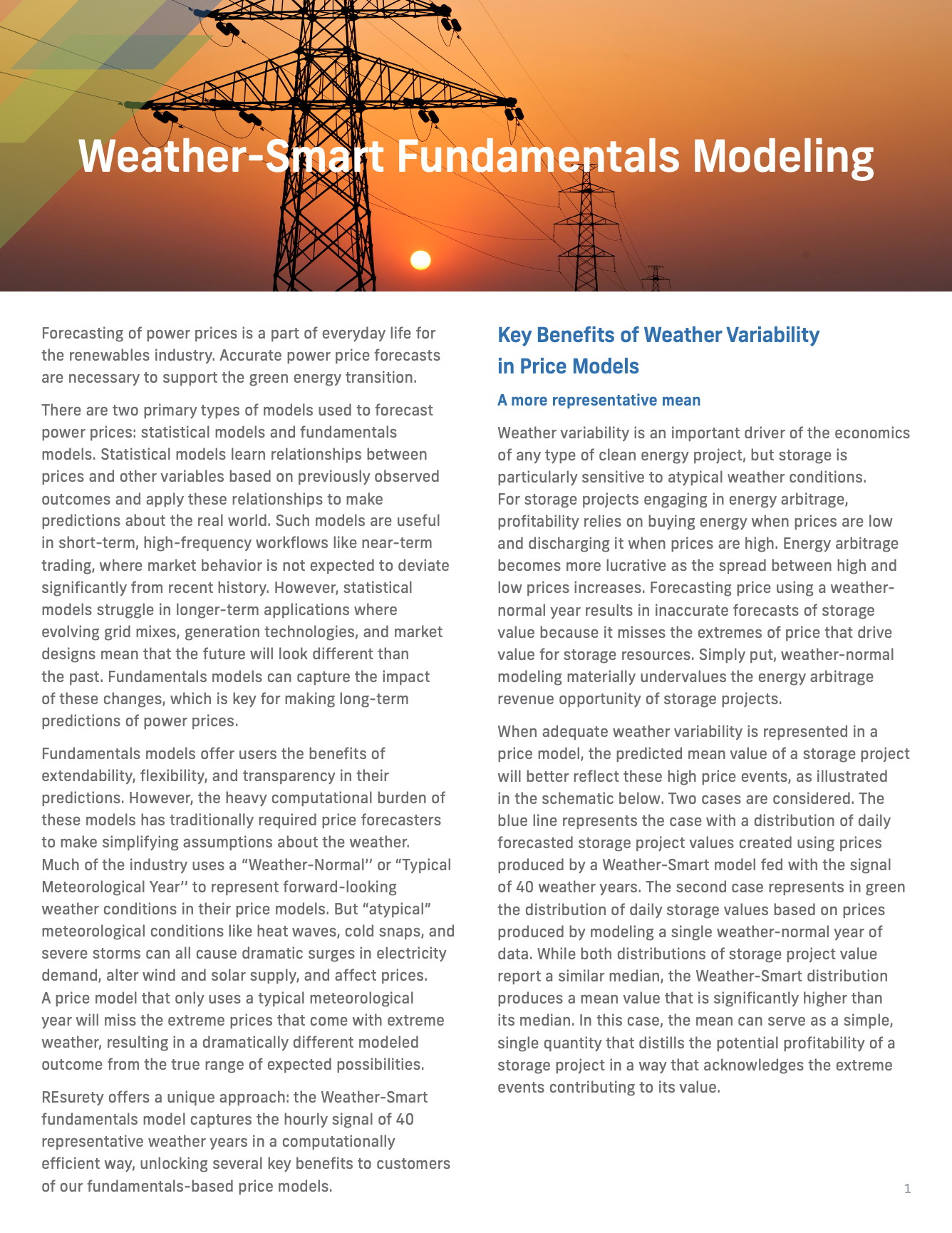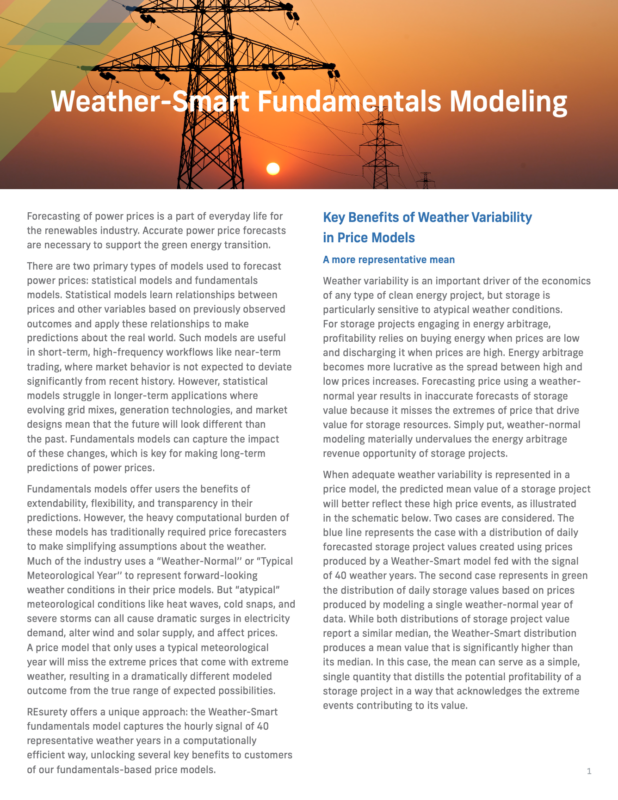

In late 2022, we announced the availability of Weather-Smart fundamentals power price forecasts. These forecasts give our customers unprecedented insight into the connection between weather, fundamentals, and value. Using REsurety’s suite of products and services, customers can determine the value of clean energy projects under expected conditions, stress test downside risk, and quantify potential upside. They can assemble and monitor portfolios of assets that help mitigate correlated risks. And they can quantify the carbon impact of clean generation, storage, and power consumption, accounting for location, timing, and a changing grid.
We recently updated our Weather-Smart forecasts for ERCOT and PJM. We have also released forecasts for CAISO for the first time. These forecasts are now available across REsurety’s offerings. Accompanying this release, our customers have also received our new Q2 Weather-Smart report. This report provides customers with increased visibility into the methodology and input data driving our forecasts, giving them what they need to make better decisions using our forecast data. The report also provides a summary of high-level takeaways and discusses the changes in our outlook since the previous release.
Our Q2 2023 Weather-Smart forecasts provide forward-looking views of Around the Clock (ATC) power prices, market heat rates, wind and solar capture rates, and Locational Marginal Emissions rates (LMEs) for a selection of hubs in ERCOT, PJM, and CAISO. Forecasts include five fundamental scenarios and represent over 40 years of weather variability. Some of our high-level takeaways include:
- Solar Buildout Drove Capture Rate Shifts: Similar to last quarter, our modeling shows substantial reductions in solar capture rates as solar buildout ramps up. The speed of the decrease depends on fundamentals, weather, and market, with CAISO showing particularly low capture rates due to large existing and planned solar penetration. Our results show it is unlikely for solar to retain greater than 100% capture rates for very long in those markets where capture rates have historically been positive.
- Weather and Fundamentals Continued to Drive Meaningful Capture Rate Variability: Capture rates (calculated with ISO-average generation) vary by approximately 60 percentage points for solar and approximately 30 percentage points for wind for some markets and forward years. Even larger ranges of capture rates are expected when considering site-specific generation profiles.
- Gas Prices Largely Continued to Fall: Since our Q1-2023 release, gas forwards have fallen across most forward years and locations, with slight near-term increases. Henry Hub prices are down ~$0.25/MMBTU in 2024, up a similar amount in 2025-27, and down by as much as $1.50/MMBTU through 2040. This generally reduced ATC power prices, increased market heat rates, and reduced wind and solar capture rates.
- PJM Supply Stack Tightened: PJM generator online and retirement dates were updated. The net result of this change was a material reduction to natural gas and solar capacity in the near term, with a slight increase in wind capacity. This change boosted market heat rates.
- PJM Maintenance Refined: Generator maintenance schedules were refined to avoid periods of excessive supply/demand tightness in May. This change improved the quality of our seasonal backcasts and forecasts and slightly reduced modeled market heat rates.
- CAISO Market Added: Results are now available for CAISO’s NP15, SP15, and ZP26 hubs. CAISO ATC prices are generally higher than ERCOT and PJM primarily due to higher gas prices. Near-term wind capture rates are generally above ERCOT and below PJM, but trend up over time in contrast to those markets. In contrast, solar capture rates are materially lower than in ERCOT and PJM and decline over time.
If you are a forecast customer of REsurety, this report is included in your service. If you’re interested in learning more about REsurety, this report, and other products and services, please reach out to [email protected] or request a demo.
About the author
David Luke Oates co-leads REsurety’s Research team. His team builds, tests, and deploys fundamentals and statistical models of electricity prices and emissions to support customer workflows. David Luke has over a decade of experience working in the electric power sector from positions in academia, consulting, and technology. Before joining REsurety, he was a consultant at The Brattle Group, supporting electricity market operators, utilities, and asset owners to address market design, asset valuation, and regulatory questions.
Dr. Oates holds a Ph.D. in Engineering and Public Policy from Carnegie Mellon University and a Bachelor’s degree in Engineering Physics from Queen’s University, Canada.







